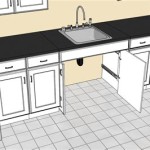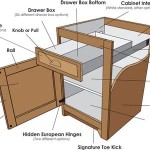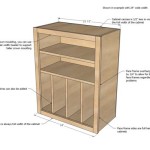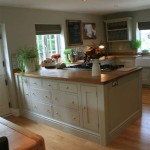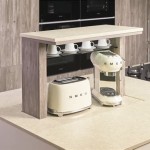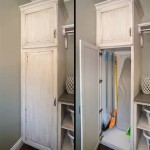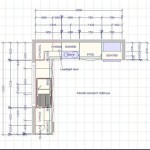Modern Glass Kitchen Cabinet Cost: A Comprehensive Guide
Modern glass kitchen cabinets have become a prevalent design choice in contemporary homes, offering a sleek aesthetic while providing functional storage. Their translucent or transparent nature allows homeowners to showcase their dinnerware, glassware, or decorative items, adding a touch of elegance to the kitchen space. However, the allure of glass kitchen cabinets often prompts the question of cost. Understanding the various factors that influence the price is crucial for homeowners planning a kitchen renovation or new construction project.
The cost of modern glass kitchen cabinets is not a fixed figure. It is dependent on a variety of parameters, including the type of glass used, the cabinet construction material, the size and complexity of the design, and installation charges. This article provides a detailed overview of these influencing factors to help potential buyers make informed decisions and budget effectively.
Glass Type and Its Impact on Cost
The type of glass used in cabinet doors significantly affects the overall cost. Several options are available, each with unique characteristics and price points.
Clear Glass: This is the most basic and generally the least expensive option. Clear glass provides an unobstructed view of the cabinet's contents, making it ideal for displaying items. However, it also means that any clutter or disorganization inside will be visible. The cost-effectiveness of clear glass makes it a popular choice for budget-conscious homeowners.
Frosted Glass: Frosted glass offers a degree of privacy by obscuring the view of the cabinet's interior. The frosted effect is achieved through acid-etching or sandblasting the glass surface. This type of glass diffuses light, creating a softer and more subtle appearance. Frosted glass is typically more expensive than clear glass, but it offers a balance between aesthetics and practicality, concealing imperfections or less visually appealing items stored inside.
Textured Glass: Textured glass incorporates patterns or designs on the surface, adding depth and visual interest to the cabinets. Various textures are available, ranging from subtle ripples to more pronounced geometric patterns. Textured glass offers a higher degree of privacy compared to frosted glass and can complement a variety of kitchen styles. The cost of textured glass depends on the complexity of the design, with more intricate patterns commanding a higher price.
Leaded Glass: Leaded glass, also known as stained glass, involves assembling pieces of colored glass held together by lead came. This type of glass is often used in traditional or vintage-style kitchens, adding a touch of artistry and elegance. Leaded glass is significantly more expensive than other types of glass due to the intricate craftsmanship involved in its production.
Tempered Glass: Regardless of the surface finish (clear, frosted, or textured), opting for tempered glass is crucial for safety. Tempered glass is treated to be significantly stronger than standard glass and shatters into small, relatively harmless pieces if broken. This safety feature is especially important in kitchens, where accidents can occur. Tempered glass typically adds a small premium to the overall cost, but the added safety is a worthwhile investment.
The thickness of the glass also plays a role in the price. Thicker glass is more durable and resistant to breakage, but it also comes at a higher cost. Homeowners should consider the level of traffic and potential for impact in their kitchen when selecting the glass thickness.
Cabinet Construction Material and Its Influence on Price
The material used for the cabinet frame and box is another major factor affecting the overall cost. Common materials include solid wood, plywood, particleboard, and MDF (Medium-Density Fiberboard).
Solid Wood: Solid wood is considered the highest quality and most expensive option. It offers superior durability, strength, and aesthetic appeal. Common wood species used for kitchen cabinets include maple, oak, cherry, and walnut. Different wood species have varying grain patterns and colors, influencing the overall look and price. Solid wood cabinets are known for their longevity and ability to withstand wear and tear. However, solid wood can be susceptible to changes in humidity and temperature, potentially leading to warping or cracking if not properly sealed and maintained.
Plywood: Plywood is an engineered wood product made by gluing together multiple layers of wood veneer. It offers excellent strength and stability, making it a popular choice for cabinet construction. Plywood is less susceptible to warping than solid wood and provides a smooth surface for painting or finishing. The cost of plywood varies depending on the grade and thickness, with higher-grade plywood being more expensive.
Particleboard: Particleboard is made from wood chips and resin compressed together. It is a more affordable option compared to solid wood and plywood. However, particleboard is less durable and susceptible to water damage. It is often used in budget-friendly cabinet options. Cabinets made of particleboard are generally lighter in weight and easier to install, but they may not withstand heavy use or prolonged exposure to moisture.
MDF (Medium-Density Fiberboard): MDF is an engineered wood product made from wood fibers and resin. It offers a smooth and consistent surface, making it ideal for painting and finishing. MDF is more resistant to warping than solid wood and particleboard. It is a mid-range option in terms of cost and durability. MDF is commonly used for cabinet doors and drawer fronts, providing a sleek and uniform appearance.
The hardware used on the cabinets, such as hinges, handles, and drawer slides, also contributes to the overall cost. High-quality hardware ensures smooth operation and durability, while more affordable options may be prone to wear and tear.
Design Complexity and Installation Costs
The complexity of the cabinet design also influences the price. Simple, standard-sized cabinets are generally less expensive than custom-designed cabinets with intricate details or unique configurations.
Custom Cabinets: Custom cabinets are designed and built to specific measurements and specifications, allowing homeowners to maximize their kitchen space and create a personalized look. Custom cabinets offer greater flexibility in terms of style, materials, and features. However, they are significantly more expensive than stock or semi-custom cabinets. The design process for custom cabinets involves working closely with a designer or cabinet maker to create detailed plans and specifications. The increased labor and material costs associated with custom construction contribute to the higher price.
Semi-Custom Cabinets: Semi-custom cabinets offer a middle ground between stock and custom options. They are available in a range of standard sizes and styles, but homeowners can also modify certain aspects, such as door styles, finishes, and hardware. Semi-custom cabinets provide a balance between affordability and customization, allowing homeowners to create a unique look without the high cost of fully custom cabinets.
Stock Cabinets: Stock cabinets are pre-built and readily available in standard sizes and styles. They are the most affordable option but offer limited customization. Stock cabinets are a good choice for budget-conscious homeowners or those who need cabinets quickly. However, the limited size options may not be suitable for all kitchen layouts.
The installation cost is another significant factor to consider. Professional installation ensures that the cabinets are properly installed and aligned, maximizing their functionality and longevity. The cost of installation varies depending on the complexity of the project, the size of the kitchen, and the labor rates in the area. DIY installation can save money on labor costs, but it requires considerable skill and experience. Improper installation can lead to problems such as uneven cabinets, misaligned doors, and structural instability.
Furthermore, additional features such as soft-close hinges, pull-out shelves, and built-in lighting can add to the overall cost. These features enhance the functionality and convenience of the cabinets, but they also require additional hardware and installation.
In conclusion, the cost of modern glass kitchen cabinets is a multifaceted issue determined by a range of factors. The choice of glass type, the cabinet construction material, the design complexity, and the installation method each contribute significantly to the final price. By carefully evaluating these factors and considering their individual needs and budget, homeowners can make informed decisions and create a stylish and functional kitchen space that meets their requirements.

Modern Glass Modular Kitchen Cabinet Wall Mounted

What Do Kitchen Cabinets Cost Tips To Stay In Budget

Average Cost For Kitchen Cabinets Cabinet Now

5 Types Of Glass Kitchen Cabinets To Elevate Your Home Décor

Pros Cons Of Glass Front Cabinet Doors For Your Kitchen

5 Types Of Glass Kitchen Cabinets To Elevate Your Home Décor

Kitchen Cabinet S Pictures Options Tips Ideas

Eight Elegant Ways To Design Glass Fronted Kitchen Cabinets

How Much Does It Cost To Replace Kitchen Cabinet Doors

Glass Kitchen Cabinets To Enhance Your Cooking Area

